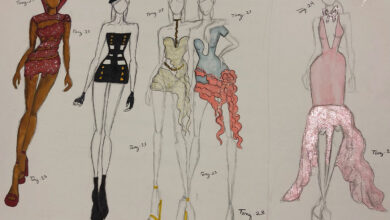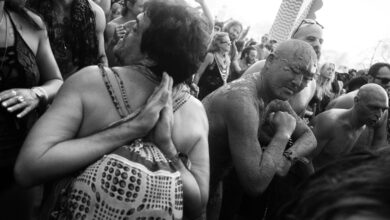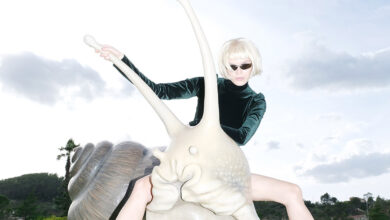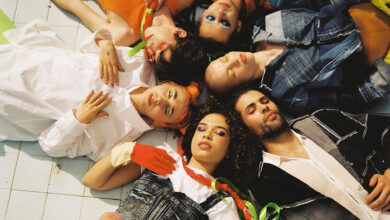American photographer Jeannette Montgomery Barron talks to Zoot Magazine about how her still life images of her mother’s clothes turned into a book celebrating her mum and the power of remembering through beautiful garments…
Text by Anna Battista
Clothing can easily replace a photographic portrait because they somehow speak of the individual who inhabited them long after the wearer has gone. Yet when American photographer Jeannette Montgomery Barron first started taking pictures of her mother’s clothes and accessories, her immediate aim wasn’t creating an artistic project about vital life themes such as presence and absence, but helping her mother to remember.
A passionate fashion fan and an elegant woman, Jeannette’s mother Eleanor was struck by Alzheimer’s. As the disease progressed, Jeannette started taking pictures of her mother’s clothes, arranging them carefully as if she were setting up poetic still lives.
Realising that her unique “portraits” of a jacket, a pair of shoes or a bottle of scent with a few drops left in sparked up vivid memories in her mother, Montgomery Barron decided to come up with an entire book.
Entitled My Mother’s Clothes (Welcome Books), the volume, featuring images of designs by Bill Blass, Oscar de la Renta and Halston among the others, and Lanvin, Gucci and Pucci accessories, is not only a visual album of personal memories and an ode from a daughter to a mother, but it’s also an example of the power of fashion and an inspiration for people with a loved one struck by Alzheimer’s disease.
Zoot Magazine: Can you tell us more about the background of My Mother’s Clothes?
Jeannette Montgomery Barron: This project started because my mother had to move from a big house in Virginia where she lived. She had started becoming difficult to manage and she would leave the water running and flood the house or she would get in the car, drive and get lost. So we had to move her, but at home she had this huge closet of clothes and, almost as a part of a daily ritual, she would go in everyday and do a sort of inventory. I didn’t know what she was going to do with all that, so I thought about doing a sort of catalogue or an album of her closet, taking shots of her clothes and putting them all in a scrapbook for her. I live and work in Rome, but I’m often back and forth between the States and Italy, so I put a bunch of clothes in a suitcase, brought them back with me and started taking photographs.
Z: When did you first realise this personal project could have been turned into a book?
JMB: Everytime I do a set of photographs it is with a book in mind, but, in this case, I didn’t know it could have become a book until I showed my mother the pictures and she just started recollecting each piece of clothing and what she did in it. I got really obsessed with the idea of a book and worked really fast because I wanted to get it done before she died as that seemed to be the whole point behind it. In the end I didn’t manage to, but what had initially started as a personal project, eventually became much more important since, as soon as the book was out, I got different responses from all sorts of people, from the art world, from the fashion industry and so on, proving that the book really crossed a lot of borders.
Z: Is there something that, while putting together the photographs, you discovered about your mother that you didn’t know?
JMB: That’s a hard question. Maybe I became a little bit closer to her. As a child and as I grew up I didn’t understand her obsession with fashion, it was a language that was foreign to me. I do love clothes, but I love beautifully functional clothes that allow me to work. Yet fashion is an art form and if you watch a film like L’Amor Fou about Yves Saint Laurent you realise certain designers are artists. Maybe after this project I started seeing other aspects about her that weren’t so evident to me. My mother was very basic in what she loved, aside from the clothes she loved gardening, cooking, all the beautiful things that are in nature and obviously my kids, her grandchildren. But then, little by little, I realised she had a great sense of humour.
Z: Is there a piece that you particularly like from her wardrobe and what happened to her closet after you finished the project?
JMB: The tiger jacket. She always tried to get me to wear it because she loved it and there was something about it that was racy and outrageous. My brother and I wanted to donate the clothes to places where they could study them and be inspired by them rather than selling the pieces as a collection. We really liked this idea and we ended up donating them to two different places, the Savannah College of Art and Design, as they have a brand new museum there, and the Textile Department of the University of Georgia, because she attended that university and they collect the clothing of famous Georgians.
Z: Which was your mother’s favourite designer?
JMB: Bill Blass because he was American and classic and they had a sort of funny friendship between them. He would always insult her in a loving way and she would get right back to him! She loved Oscar de la Renta, though he’s a bit more frilly, and Yves Saint Laurent as well.
Z: What was the most unexpected feedback you got about your project?
JMB: I got beautiful notes from all sorts of readers – men, women, people who found me on Facebook and so on. One day I got an email from a woman named Rachel Zoe. I remember asking my daughter who she was and she went “You don’t know her? She’s huge!”
Z: How would you define the images you collected in this book, would you consider them as still lives?
JMB: I started as a portrait photographer and I guess these still life images of my mother’s clothes can actually be considered as portraiture.
Z: The photographs you took for the book became part of different exhibitions, will they be touring anywhere else in the world in the next few months?
JMB: So far I had a very nice exhibition in Atlanta, Georgia, and in Rome. I haven’t been really onto the case, but I would like to have an exhibition in a fashion capital such as Paris maybe during the local fashion week as I’m sure the main themes of the project would spark up an interesting dialogue.














